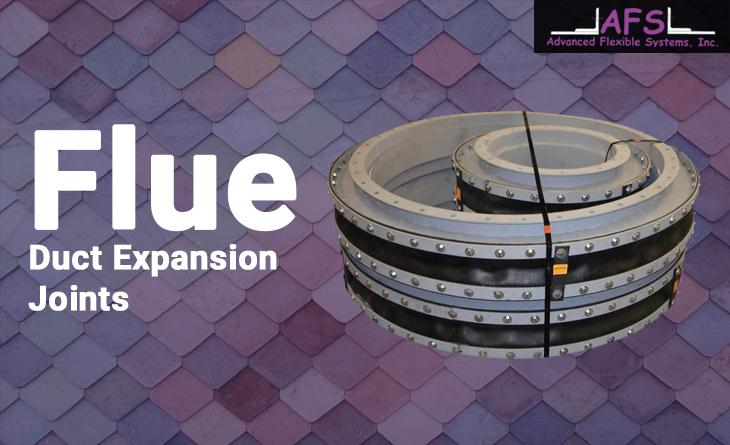Handling Flue Duct Expansion Joint Dynamics in Industrial Applications
Flue duct expansion joints are essential components in the industrial operation framework, especially in systems that handle the movement of flue gases. Often referred to as fabric expansion joints or flue gas expansion joints, these parts are essential to maintaining the effectiveness and structural integrity of industrial operations. across this thorough investigation, we examine the importance of flue duct expansion joints, including their kinds, functions, and uses across a range of sectors.
Flue Duct Expansion Joint Functions:
Flue duct expansion joints play a crucial role in the complex machinery of industrial operations. These joints primarily adjust for thermal expansion and contraction. The ducts move as the temperature of the flue gases changes, and expansion joints are made to take this into account. This prevents structural damage and prolongs the life of the system.
These joints also play a crucial role in vibration isolation. Processes in industrial environments often produce vibrations that might jeopardize the stability of associated equipment, including ducting. By acting as buffers, reducing vibrations, and safeguarding the system’s overall integrity, flue duct expansion joints help to delay component wear and tear.
A further important role of expansion joints is their flexibility in misalignment. Misalignments in flue ducts may occur for several reasons, including uneven installation or settling over time. These misalignments are accommodated by expansion joints, which keep the connection between duct segments continuous and leak-free.
Flue Duct Expansion Joint Types:
Metallic Expansion Joints: Used often in high-temperature applications, metallic expansion joints are made of materials such as stainless steel or other alloys. These couplings are corrosion-resistant and long-lasting, which makes them ideal for the demanding circumstances related to flue gasses.
Fabric Expansion Joints: Made of layers of materials resistant to high temperatures, fabric expansion joints provide flexibility in accommodating thermal movements and misalignments. They have benefits including less weight, simplicity of installation, and affordability.
Refractory-Lined Expansion Joints: These Expansion Joints are used in situations where high temperatures and abrasive media are present. Refractory materials are used to line these connections to survive harsh environments and guarantee the entire system’s dependability and safety.
Flue Duct Expansion Joint Applications:
Power Generation: In power plants, particularly those that use fossil fuels, flexible duct expansion joints are essential. By accommodating temperature fluctuations in the ducting linked to boilers, they preserve operational efficiency and guard against structural damage.
Chemical Processing: Industries that work with chemicals often deal with hot, caustic gasses. In these situations, flue duct expansion joints are essential because they provide the system the flexibility it needs to handle harsh media and guarantee system safety.
Petrochemical Plants: Flue duct expansion joints help petrochemical facilities, which deal with a broad variety of temperatures and chemical processes, by accounting for thermal expansion and giving the ducting flexibility.
Flue Duct Expansion Joint Design Considerations:
Flue duct expansion joints are designed with several important factors in mind. One important consideration that affects the selection of materials is the application’s temperature range. Fabric expansion joints are intended for applications with moderate temperatures, while metallic expansion joints are appropriate for high-temperature settings.
Furthermore, corrosion resistance is essential, particularly in sectors of the economy where flue gases include corrosive substances. Stainless steel and other alloys used to make metallic expansion joints provide superior corrosion resistance, extending the component’s lifetime.
Other crucial design factors are movement absorption, flexibility, and pressure ratings. The joints need to be strong enough to endure changes in pressure and absorb motion efficiently without putting undue strain on the ductwork.
Setup and upkeep:
For flue duct expansion joints to function as best they can, appropriate installation is essential. It is ensured that the joints are installed appropriately and can work as intended by adhering to industry best practices and manufacturer requirements.
Flue duct expansion joints must be regularly inspected and maintained to remain functioning. It is important to do routine inspections to spot any wear, corrosion, or damage. Prompt maintenance procedures, such as cleaning and lubrication, may help these parts last longer.
New Developments in Joint Flue Duct Expansion Technology:
New materials for flue duct expansion joints have been made possible by ongoing materials science research and development. These materials contribute to increased performance and longevity by providing greater resistance to abrasion, corrosion, and severe temperatures.
Real-time tracking of performance indicators is made possible by the incorporation of smart monitoring devices into flue duct expansion joints. By providing useful information on pressure fluctuations, temperature swings, and total joint stress, these devices reduce the possibility of unplanned breakdowns and allow for predictive maintenance.
Flue Duct Expansion Joints with modular designs are more flexible and simple to replace. This makes it possible for industrial operations to be maintained quickly and effectively without requiring prolonged downtime.
In summary:
In industrial settings, flue duct expansion joints continue to be essential parts of the system that guarantee the safe and effective functioning of the flue gas transportation systems. Technological, material, and design developments keep improving these joints’ capabilities, which adds to their increased lifetime and dependability in a variety of industrial applications. The future of flue duct expansion joint technology will be shaped by the continuous dedication to research, innovation, and regulatory compliance as industries change, further securing their vital place in industrial operations.

